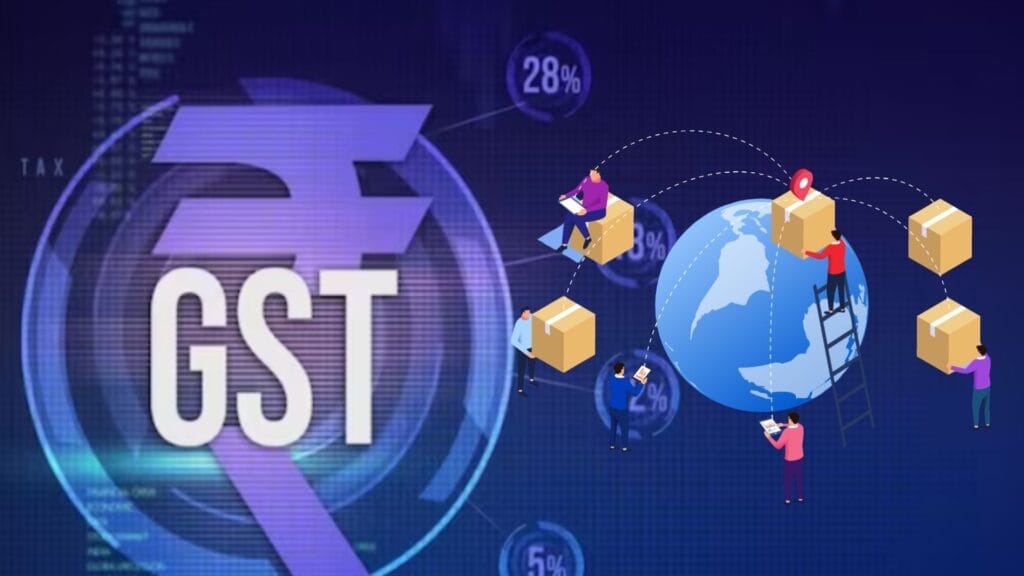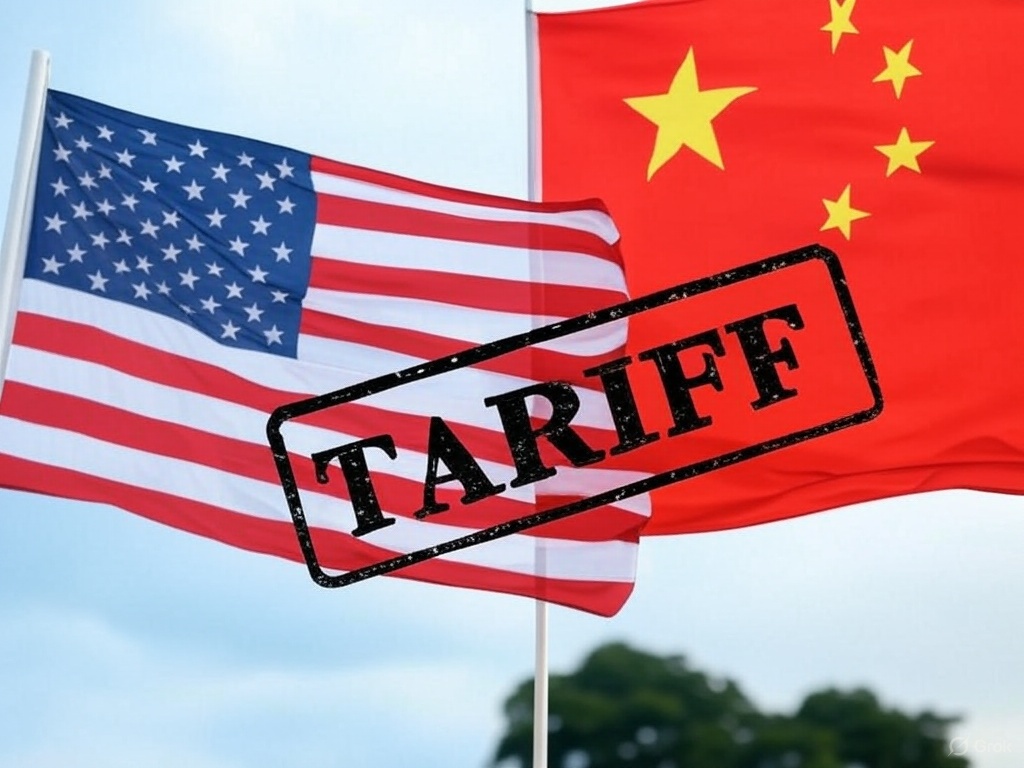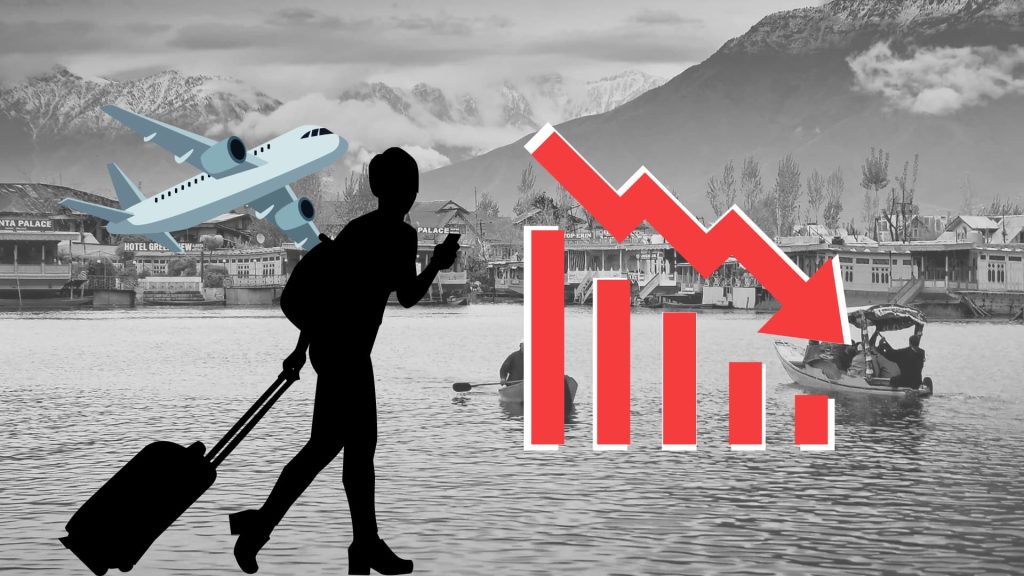Executive Summary
This report examines the effect of the Goods and Services Tax (GST), introduced on 1st July 2017, on India’s supply chain, logistics sector, and inflation control. It presents GST as a structural turning point that replaced a complex web of indirect taxes with a single unified system, creating a common national market and driving significant economic efficiencies.
Before GST, India’s supply chain was constrained by a fragmented tax structure, including VAT, CST, and octroi, which created cascading tax effects and operational inefficiencies. Trucks lost an estimated 20-25% of travel time at state border check posts, leading to unpredictable delays. Warehousing strategies were dictated by tax avoidance rather than operational efficiency, compelling firms to maintain multiple small warehouses across states. This resulted in disproportionately high logistics costs, which stood at 7.6-8.6% of GDP in 2016-17, eroding the competitiveness of Indian goods.
The implementation of GST created an integrated national market by dismantling interstate tax barriers. The removal of border check posts improved truck turnaround times, increasing the average distance traveled daily from 225 km to 300-325 km. This reform enabled companies to consolidate warehousing operations into larger, strategically located facilities, improving economies of scale and fostering investment in automation and modern inventory systems. Consequently, a study by the National Council of Applied Economic Research (NCAER) confirmed that logistics costs declined by 0.8 to 0.9 percentage points of GDP between FY14 and FY22. This improvement is reflected in India’s enhanced ranking in the World Bank’s Logistics Performance Index, from 44th in 2018 to 38th in 2023.
The resilience of the GST-enabled supply chain was particularly evident during the COVID-19 pandemic. The seamless interstate movement of essential goods, such as food and medicines, prevented critical shortages and contained the sharp price spikes seen in many other economies. While global supply chains faced severe disruptions, the efficiency gains from GST helped moderate inflationary pressures in India. Consumer price inflation in India rose to 6.2% in 2020-21, a figure substantially lower than the double-digit inflation recorded in economies like Turkey (12.3%) and Brazil (8-10%). This stability supported India’s V-shaped economic recovery, with GDP rebounding from a contraction of -7.7% in 2020-21 to a growth of 9.1% in 2021-22.
GST has fundamentally reshaped India’s logistics landscape, reducing inefficiencies, lowering costs, and enhancing competitiveness. Its role in ensuring the uninterrupted flow of essential goods during the COVID-19 crisis underscored its significance in maintaining economic stability. The reform has laid the foundation for a more resilient, efficient, and technology-driven supply chain ecosystem poised for future growth.
Introduction:
The Goods and Services Tax (GST), introduced in India on 1st July 2017,1 is widely regarded as one of the most significant economic reforms since independence. By replacing a complex web of indirect taxes with a single unified system, GST aimed to simplify taxation, improve efficiency, and create a common national market.
Among the many sectors influenced by GST, the logistics and supply chain sector has witnessed some of the most visible and far-reaching changes. Logistics acts as the backbone of India’s economy, ensuring the smooth movement of goods across states and supporting industries ranging from agriculture to e-commerce. Before GST, this sector was constrained by fragmented tax structures, high costs, and operational inefficiencies. Post-GST, India has gradually moved towards a more integrated, technology-driven, and cost-effective supply chain system. The relevance of this reform was tested during the COVID-19 pandemic, when the creation of a single market under GST played a vital role in keeping essential goods moving across the country and helped in containing inflationary pressures.
This report seeks to examine the effect of GST on India’s supply chain and logistics sector, comparing the pre-GST and post-GST scenarios. It also highlights how GST contributed to inflation control during COVID-19 and evaluates its long-term impact on the economy. The ultimate objective is to provide a clear understanding of how GST has reshaped India’s logistics landscape and what challenges and opportunities lie ahead.
Fragmented Supply Chains under the Pre-GST Regime
Before the implementation of the Goods and Services Tax in 2017, India’s taxation and supply chain environment was marked by complexity and inefficiency. The tax system was fragmented across states, with VAT, CST, octroi, and entry tax2 applied at different levels, creating cascading tax effects. Every interstate movement of goods required separate documentation and payment of duties, discouraging seamless trade. Industry surveys estimated that trucks lost 20–25%3 of total travel time at state borders due to inspections and tax clearances, causing unpredictable delays. Warehousing strategies reflected these distortions. Instead of maintaining large, strategically located warehouses for operational efficiency, firms were compelled to set up multiple small warehouses in different states to avoid inter-state tax burdens. This increased overhead costs and reduced the ability to consolidate inventory or invest in modern storage and cold-chain facilities.
The overall impact was disproportionately high logistics costs. NITI Aayog and DPIIT-NCAER data4 show that transportation expenses accounted for 75–85% of total logistics costs during this period. Annual transportation expenditure rose sharply from ₹55,690 crores in 2011–12 to ₹87,650 crores in 2016–17, with road transport as the largest contributor (₹31,280 → ₹51,130 crores). Railways accounted for ₹6,740–9,670 crores, water transport declined from ₹4,750 to ₹3,940 crores, and air freight doubled from ₹1,160 to ₹2,120 crores. In contrast, warehousing and storage costs remained marginal, at ₹1,380–1,600 crores annually (just 2–3% of total logistics costs), underlining how efficiency-driven consolidation was largely absent.
As a share of GDP, logistics costs remained a drag on competitiveness. They accounted for 8.7–9.9% of GDP in 2011–12 and, despite modest improvements, still stood at 7.6–8.6% in 2016–17.5 The decline was attributed mainly to lower fuel prices and incremental infrastructure upgrades rather than structural efficiency. By comparison, most developed economies maintained logistics costs around 8% of GDP, highlighting the persistent gap. The burden of this inefficiency was felt across the economy: for capital goods, longer lead times and higher costs slowed project execution and increased the price of machinery; for consumer goods, multiple tax layers inflated end prices and reduced affordability. Together, these weaknesses eroded the competitiveness of Indian goods both domestically and internationally.
The burden was visible across the economy. For capital goods, longer lead times and higher interstate costs delayed projects and inflated the price of machinery and equipment. For consumer goods, multiple taxation layers drove up retail prices and reduced competitiveness. These inefficiencies eroded productivity and weakened India’s position in global markets.
The pre-GST period was defined by a supply chain system constrained by fragmented taxation, inefficient warehousing, and disproportionately high logistics costs. The cascading effect of multiple levies, combined with delays at state borders and the absence of efficiency-driven consolidation, created a costly and unreliable logistics network. These structural inefficiencies not only inflated prices for consumers and slowed industrial projects but also weakened India’s overall competitiveness, making tax reform an urgent necessity.
Integrated Supply Chains in the Post-GST Era
The introduction of the Goods and Services Tax in July 2017 marked a turning point in India’s supply chain landscape. By replacing a complex web of state-level levies, such as CST, entry tax, and octroi, with a unified national tax system, GST created a single market across the country. This reform significantly reduced cascading tax effects, simplified compliance, and removed many of the barriers that had previously fragmented interstate trade. One of the most immediate benefits was the removal of border check posts, which had long delayed the movement of goods. Industry estimates suggest that trucks, which earlier lost 20–25% of their travel time at state borders, saw turnaround times improve by nearly the same margin post-GST. Faster movement of vehicles not only improved reliability in supply chains but also reduced fuel consumption and operating costs.
GST also reshaped warehousing strategies. With interstate tax barriers eliminated, companies were no longer compelled to maintain multiple small warehouses in every state. Instead, they could consolidate operations into fewer, larger, and strategically located warehouses, improving economies of scale and enabling greater investment in automation, cold-chain facilities, and modern inventory systems. This shift allowed businesses to prioritize operational efficiency over tax planning.
The impact was clearly visible in logistics costs. Although still above global benchmarks, India’s logistics expenditure has shown a measurable decline since the introduction of GST. The Economic Survey 2023–246 notes that GST has “played a remarkable role in reducing logistics costs” by eliminating border delays and increasing the average distance trucks travel, from 225 km before GST to 300–325 km after its rollout. A study by the National Council of Applied Economic Research (NCAER)7 further confirmed that logistics costs in the economy declined by 0.8 to 0.9 percentage points of GDP between FY14 and FY22, reflecting efficiency gains from reforms. These improvements are also mirrored in global benchmarks: India’s rank in the World Bank’s Logistics Performance Index (LPI) improved from 44th in 2018 to 38th in 2023, driven by better cost efficiency and trade facilitation. Alongside this, port efficiency has improved significantly, at Visakhapatnam, average dwell time dropped from 32.4 days in 2015 to just 5.3 days in 2019. Together, these developments underline how GST has enhanced competitiveness and aligned India’s logistics systems more closely with global standards.
The transformation was particularly important for food and medical supply chains. In the food sector, faster interstate transport reduced spoilage of perishable goods such as fruits, vegetables, and dairy products. Investments in cold-chain logistics, previously avoided due to fragmentation, gained traction, leading to lower post-harvest losses and improved availability for consumers. Similarly, the medical supply chain became more resilient. Streamlined movement of essential drugs across states shortened procurement times and improved stock availability in hospitals and clinics. The benefits of these reforms became even more visible during the COVID-19 pandemic, when uninterrupted interstate movement of food and medicines played a critical role in controlling both shortages and inflationary pressures.
Beyond sectoral improvements, GST enhanced the overall competitiveness of Indian goods. By eliminating cascading taxes, it lowered production and distribution costs, enabling manufacturers and retailers to offer products at more competitive prices. It also improved transparency, widened the tax base, and strengthened government revenue collection, allowing reinvestment in infrastructure that further supported supply chain efficiency.
GST’s Role in Controlling Inflation During COVID-19
The COVID-19 pandemic triggered one of the sharpest supply chain shocks in modern history, with soaring logistics costs and shortages of essentials driving inflation to record levels in many countries. In India, however, inflation, though elevated, remained moderate compared to global peers, and the Goods and Services Tax was a key factor behind this stability.
By dismantling interstate barriers and removing border check posts, GST allowed essential goods such as food, medicines, oxygen cylinders, and protective equipment to move seamlessly across states. This ensured that even under strict lockdowns, hospitals and households had access to critical supplies, avoiding the sharp price spikes that shortages would otherwise have caused. A striking example was the supply of personal protective equipment (PPE) kits. At the start of the pandemic, India had virtually zero domestic production. By mid-May 2020, the country was producing 4.5 lakh PPE kits per day, becoming the second-largest producer globally.8 GST-enabled logistics, supported by digital tools like the e-way bill, ensured that these kits could be rapidly distributed across states and hospitals, stabilizing both availability and affordability.
The efficiency gains introduced by GST also helped control costs during the crisis. Before GST, trucks averaged just 225 km a day due to delays at check posts; post-GST, this rose to 300–325 km. The Economic Survey 2023–24 notes that this contributed to a measurable decline in logistics costs, by 0.8–0.9 percentage points of GDP between FY14 and FY22. By preventing a surge in transport costs, GST reduced the inflationary pass through to consumers at a time of global disruption.
This resilience is visible in inflation data. According to the Reserve Bank of India, consumer price inflation averaged 6.7% in 2016–17 (pre-GST), moderated to 3.4% in 2018–19, and rose to 6.2% in 2020–219 during the pandemic.
While higher than India’s immediate pre-COVID trend, this was far below the double digit inflation seen in many economies. Turkey averaged 12.3% in 2020 and surged to nearly 20% in 2021,10 while Brazil crossed 8–10%,11 and developed economies like the US, UK, and Germany, initially stable, saw inflation soar to 8–11% by 2022. India, by contrast, peaked early (November 2020, 6.9%)12 and moderated quickly, highlighting the role of stable supply chains in containing price pressures.
This relative stability was not accidental. By reducing interstate barriers and streamlining logistics, GST ensured that supply chain disruptions did not fully translate into higher consumer prices. In other words, the smoother supply of goods reduced the cost pass-through from producers to consumers, helping to contain inflationary pressures even when global logistics costs were soaring.
GST also supported India’s economic recovery. As restrictions eased, high-frequency indicators such as e-way bill generation, GST collections, rail freight, power demand, and steel consumption surged, signaling the revival of trade and consumption. This laid the foundation for India’s V-shaped recovery, with GDP rebounding from a contraction of –7.7% in 2020–21 to a growth of 9.1% in 2021–22,13 according to the Economic Survey. International institutions, including the IMF, recognized India’s resilience, projecting it as the fastest-growing major economy in the subsequent two years.
Conclusion
The introduction of the Goods and Services Tax has been a structural turning point for India’s supply chain and logistics ecosystem. By dismantling interstate tax barriers and consolidating a fragmented system into a unified national market, GST reduced inefficiencies, streamlined warehousing strategies, and lowered logistics costs. These changes not only enhanced competitiveness and transparency but also positioned India closer to global benchmarks in trade and logistics performance.
Its significance was most evident during the COVID-19 pandemic, when GST-enabled supply chain integration ensured the uninterrupted flow of essential goods, stabilized logistics costs, and contained inflationary pressures at a time when many economies faced runaway price surges. Beyond immediate crisis management, GST has laid the foundation for a more resilient, efficient, and technology-driven logistics sector supporting both economic stability and future growth.




